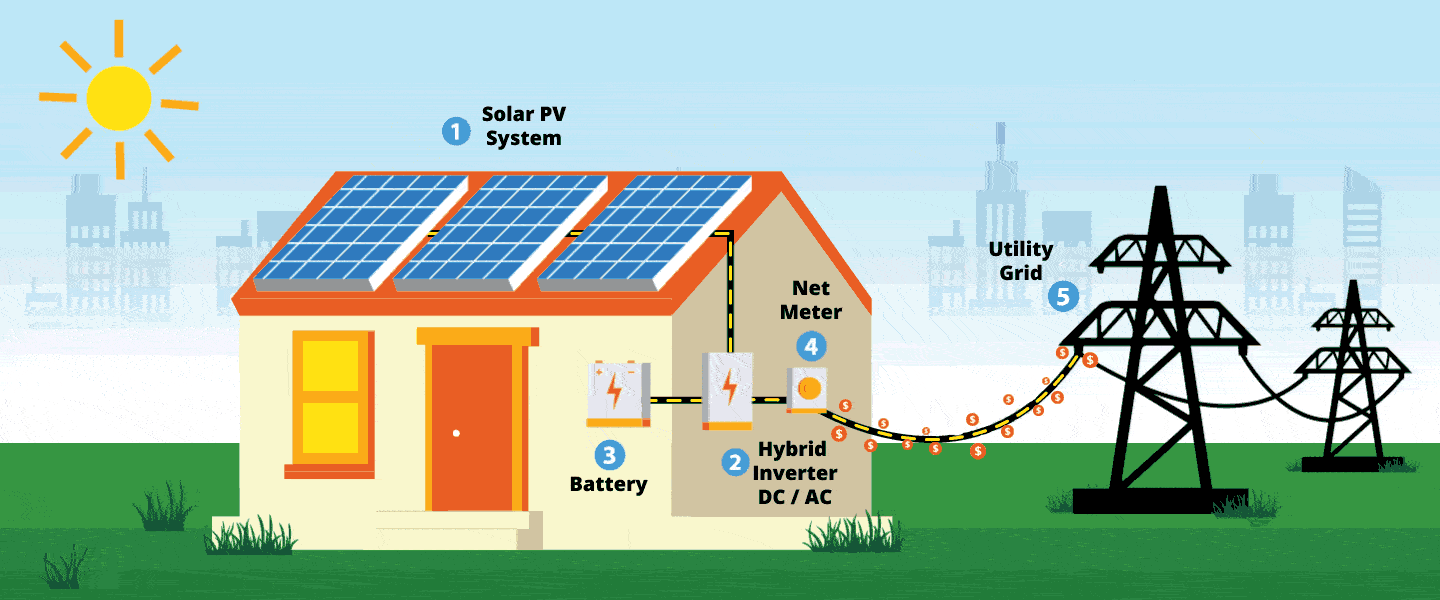Solar energy is being used more frequently to supply electricity to buildings such as your home or business. Nonetheless, many people are still ignorant of the specific workings of solar energy. In this blog, we'll look at the principles of how solar energy is caught and converted into usable energy..
First, let's talk about the technology behind solar panels. Solar panels are made up of photovoltaic (PV) cells, which are made from semiconductor materials such as silicon. When sunlight hits these cells, it causes electrons in the semiconductor material to become excited and start flowing, creating a direct current (DC) of electricity.
However, DC electricity is not the type of electricity that can be used to power homes and businesses. That's where the inverter comes in. The inverter is a device that converts the DC electricity produced by the solar panels into alternating current (AC) electricity that can be used to power homes and businesses.
Once the electricity has been converted to AC, it can be used just like any other form of electricity. It can be used to power lights, appliances, and any other electrical devices. If the solar panels produce more electricity than is needed at any given time, the excess can be stored in batteries for use later on.
So, how exactly does solar power stack up against other forms of energy? Well, one of the biggest advantages of solar power is that it is renewable. The sun is always shining, so we don't have to worry about running out of solar power like we do with fossil fuels. Additionally, solar power is becoming increasingly cost-effective as technology improves and more people adopt it.
In fact, in many parts of the world, solar power is now the cheapest form of energy available. This is especially true in areas with abundant sunshine and high electricity prices. For example, in Australia, the cost of solar power is now less than the cost of electricity from the grid in most areas.
Another advantage of solar power is that it is very low-maintenance. Once the solar panels and inverter are installed, they require very little upkeep. They don't have any moving parts, so there's nothing to wear out or break down. This means that once you have solar panels installed, you can count on them to produce electricity for many years to come.
Another advantage of solar power is that it is very low-maintenance. Once the solar panels and inverter are installed, they require very little upkeep. They don't have any moving parts, so there's nothing to wear out or break down. This means that once you have solar panels installed, you can count on them to produce electricity for many years to come.
Of course, there are also some disadvantages to solar power. One of the biggest is that it can be less effective in areas with less sunshine. This is why you see a lot of solar panels in places like California and Australia, where there is abundant sunshine year-round. In areas with less sunshine, solar power may not be as cost-effective.
Additionally, the initial cost of installing solar panels can be quite high. However, as we mentioned earlier, the cost of solar power has been dropping rapidly in recent years, so this may not be as big of a concern as it once was.
In conclusion,Solar energy can be used to power homes and businesses in a sustainable, low-maintenance, and increasingly affordable way. It is undoubtedly something that should be taken into account by anyone attempting to minimise their dependence on fossil fuels and take advantage of all that solar power has to offer.
